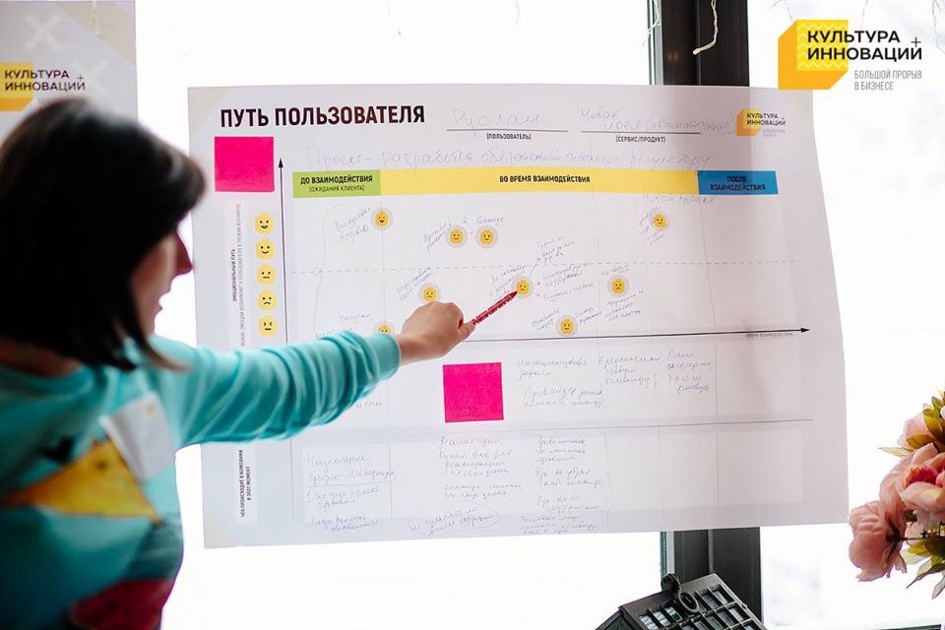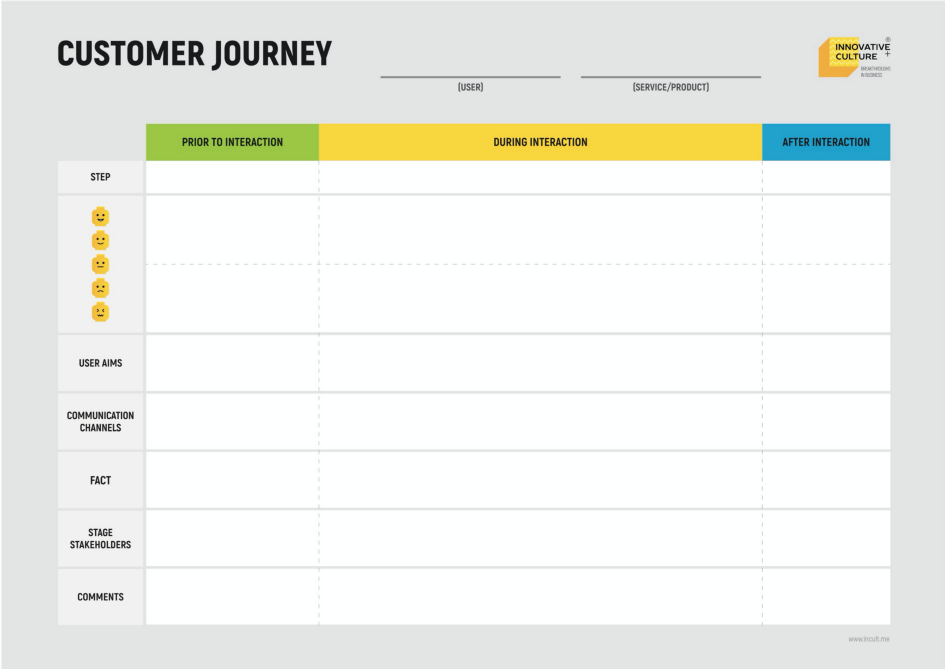Employee Experience as a new approach to HR.
Employee Experience has recently taken a central stage in many companies. Professor Kaveh Abhary introduced the term ‘Experience Management’ long before businesses started to actively use this methodology. One of the most striking early cases was the one of Airbnb, when they shifted their focus from a Human Resources Department to Employee Experience. Mark Levi, Chief Employee Experience Officer at AirBnB, who joined the company in 2014, started building seamless employee experience across the company.
I think there are several reasons for it:
- Millennials are rethinking the sheer concept of work. The employers have to answer their call for flexibility, mobility, convenience, and continuous feedback and thus redesign their job environment. It also includes intuitive technologies, the opportunity to share their comments, give positive feedback and have direct access to decision-makers.
- Companies understand that employee experience is directly connected to that of the client. To create a unique customer experience, start creating it for your employees in the first place.
- Every year studies on human resources confirm that there is a correlation between employee involvement and efficiency. Involved employees deliver a higher quality product or service.
- If the innovative potential of an employee is the cornerstone of the company’s key product, then for such a company the importance of employee experience is an indisputable truth. Seamless Employee Experience became part and parcel of company culture at Google, Facebook, LinkedIn, AirBnB back in 2014–2016.
Employee Experience and Customer Experience are, ‘twins’, in the sense that they rely on the same principles and philosophies. Employee Journey Map is one of the key tools of Employee Experience. It allows us to analyze all the touchpoint between the employee and the company, identify particular moments that matter, and transform them into the wow-moments.

7 STEPS TOWARDS EFFICIENT EJM
1. Identify your focus
I often hear that EJM can only be used for candidate and onboarding journey. Well, it is only a small part of the truth. While creating EJM, you touch a whole array of contexts in which the employee interacts with the company:
- Hiring (and all other steps that preceded it)
- Onboarding journey
- Career tracks
- Training and development
- Internal communications
- Offboarding and the period after employment
It means that you can view a particular area of interest within the framework of HR and even a separate HR product, as well as the whole trajectory of an employee in the company. Your focus of attention may also be on the employee’s “transition points” from one status to another (or from one HR-function to another) in order to create the seamless experience everyone is searching for.
2. Identify your research audience and make a map of respondents
Note, that you are mapping the path of a real person, not inventing it. But how does one choose the ‘right’ respondents for such a study?
First, identify 2 types of respondents:
- Stakeholders
They are Top managers or related business and functional units, which are somehow involved in the process studied. They may take a top-down look on the process and have their view of the required EJM outcomes. They can also be very seriously involved in the process, thus being experts in this or that product within the framework of EMJ.
- Users
These people have a personal experience of interaction with the process or product, which you are studying. This may be too big a frame. Truth is, that users can also be split into 2 categories:
A. Ideal user.
Into this category fall the employees who are comfortable using your products/services. This is the so-called target audience. You know them well, and they most likely give you regular feedback. On the whole, they are loyal and will continue to use your services.
B. Extreme user.
They differ from ideal users by one or several parameters (age, cultural code, professional experience, education, etc.). They experience difficulties in the course of interaction with your process more often or use it counter-intuitively. Communication with such users may turn out to be a rather painful experience, as they will show you that hour product/service is far from ideal. The more respondents of this type you manage to find and the more open you are with them, the higher are your chances to identify your real points of growth.
3. Make the interview-guide
After you have found your research focus and charted the map of respondents, it is just the right time to prepare your interview guide. It is the very ‘interview plan’ that you will try out on your users. Make your interview sound more like a conversation. To do this you need to thoroughly think through what exactly you are going to ask about your research interests. You may find the table below very helpful:

Note, that the guideline is there just to help you; it is not the purpose of your work! Do not turn the interview into an interrogation. Keep track of the purposes of the study and focuses of attention, but remember, that the questions do not necessarily have to appear in the predefined order. You may well ask a question that is better or more appropriate even if it is not in your guide.
4. Conduct the interview.
Here are a few interview life hacks.
Doing it right:
- Ask open questions. These are the questions, which begin with a question word: (e.g. how, which, where, how much, where from, when, etc.)
- Try to find the underlying cause. Here the question ‘Why’ and the “5 Whys” technique may come handy, It is important to understand the real motifs and pains of the people
- Turn to the real experience of the person. Your best/worst recent experience… How are you coping now?
Don’ts
- Merge several questions in one. Ask questions like “How did you learn about our company, who was your first contact person and how much did you enjoy the process of recruitment” will confuse your respondent. In this case people will either not be able to respond at all, or will only answer a part of the question. Split such questions into parts.
- Ask hypothetical or projective questions. Such wording as ‘Imagine if…’ does not work as we are interested in the employee’s real experience. An answer to a hypothetical question will be some ‘question-related fantasy’ which may have nothing to do with the employee’s actual behavior.
- Avoid pauses. Many researchers fear pauses. Give the person some time to think. If the respondent cannot answer the question, ask them whether you need to rephrase it.
Questions that will definitely help you to work out the user’s journey:
- At which point did you join the process? What did preparation look like? What happened next? How did it end?
- Try to remember how much time did each stage take?
- What is your estimate of the duration of each stage?
- What difficulties did you face? What was unexpected?
- Which of the stages was the most difficult? Why?
- What were your impressions?
- What seemed convenient to you? What was excessive?
5. Adapt the EJM template to your needs.
There are a whole plethora of map options. Consider the map that we use at Growth Culture Group.

Note, that it has the following units.
- Prior to/During/After the interaction of the employee with the company
- Stakeholders
- Stage comments
Your map can look different. Just remember the four key components, which it should have:
- Actions performed by the person
- The time required for actions
- The emotional response of the person
- The person’s quotes
6. Analyze the results that you get.
Things to pay attention to when working with the map:
- User experience gaps
Something that we may call “expectation and reality”. At which point the user did not get the expected result? At which point occurred user scenario failure (you lost an employee or they stopped using HR services)
- Time to take the steps
Which steps required more time than was convenient for the user? What difficulties did the user have in relation to such stage duration? Which user processes/aims depend on the duration of this stage?
- Negative/positive remarks and the emotional condition of the person
Note the points of contact or stages, which caused very positive and very negative emotions in the user. Negative emotions are the markers of user experience gaps (the very gaps which will help to improve your product). It is also important to understand the WOW-points so that you can understand where you meet or even exceed the employees’ expectations and why they react in a particular way to a certain touchpoint or stage.
7. Regularly update EJM
EJM is not a static map that you have once drawn and continue using for a long time. Rather, it is a dynamic tool that will allow you to ‘feel your user’. Constantly update the map, get back to it, and analyze it.
It is crucial to make it a tool for the whole team, which means that is has to be available to all at any given moment. Make sure that you have the instruments which allow to continuously use EJM together.
EJM Tools
There is a huge variety of EJM tools. Here are the ones that we use most often:
- Pen and paper. We use it for quick jobs, for example for noting touchpoints during the conversation with the respondent.
- Excel (google spreadsheet). This one is very good for teamwork, data processing and analytics.
- Miro. It has gone in handy when we need to visualize the map or when the stakeholders present the results to the team.
Summing up, I can say that the next trend in EJM is to link it with CJM (Customer Journey Map). Many international companies are working towards the development of integrated Customer Experience + Employee Experience. These decisions often go beyond HR (but can include HR products). The area of influence is a strategy, organizational, and service design. This approach is implemented on the basis of a unified Customer Experience + Employee Experience unit. This unit is headed by a Human/People Experience Officer.






